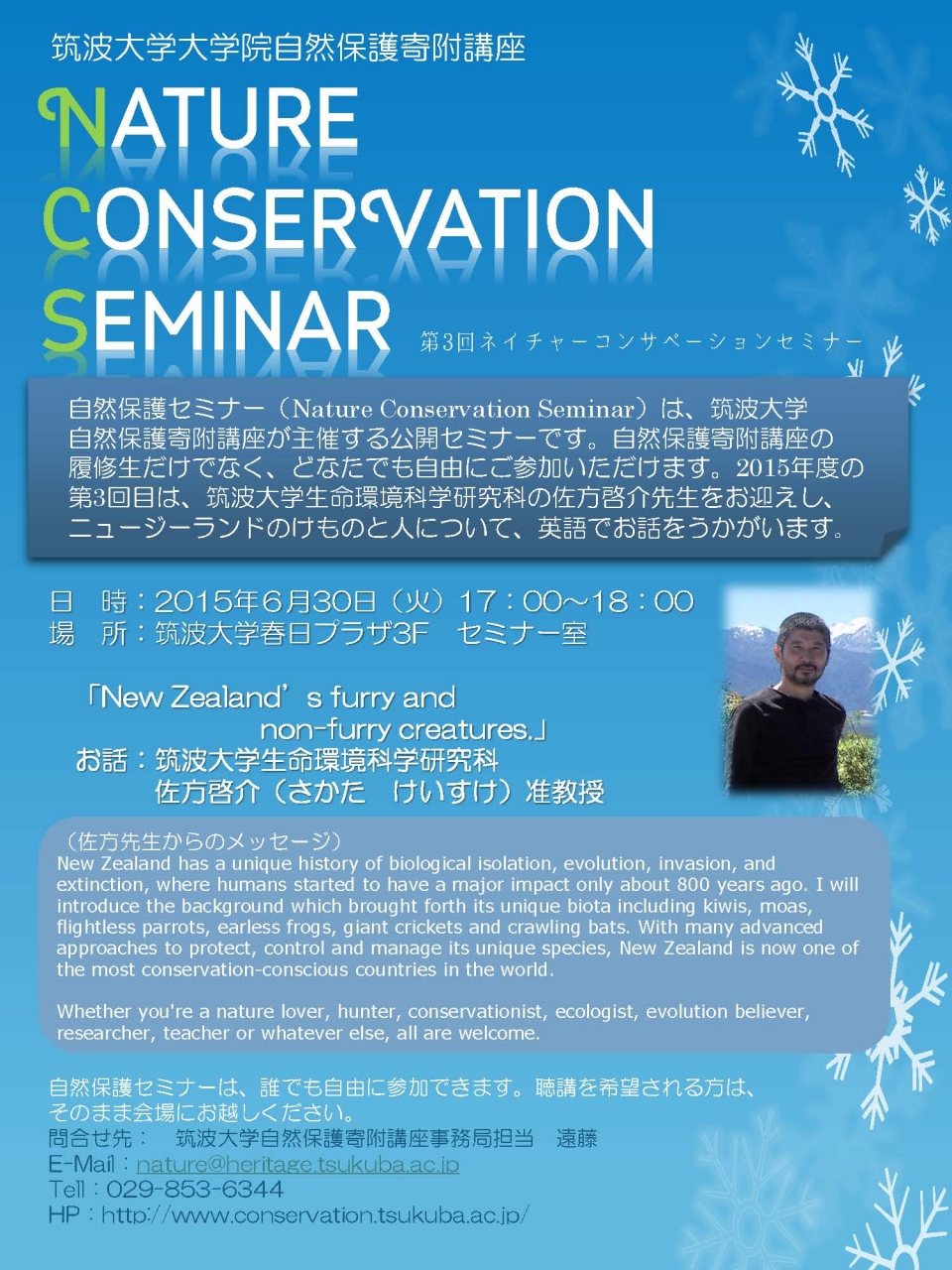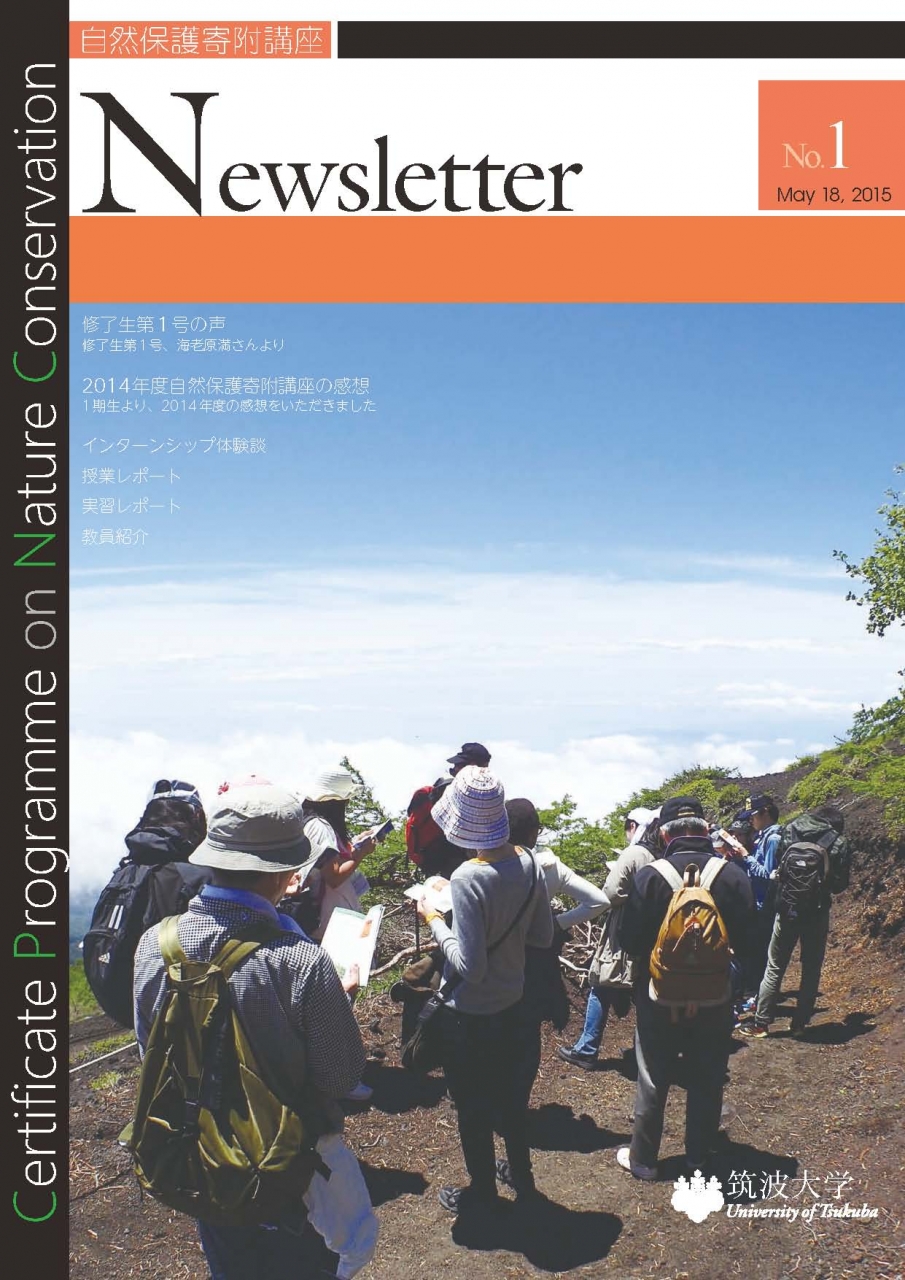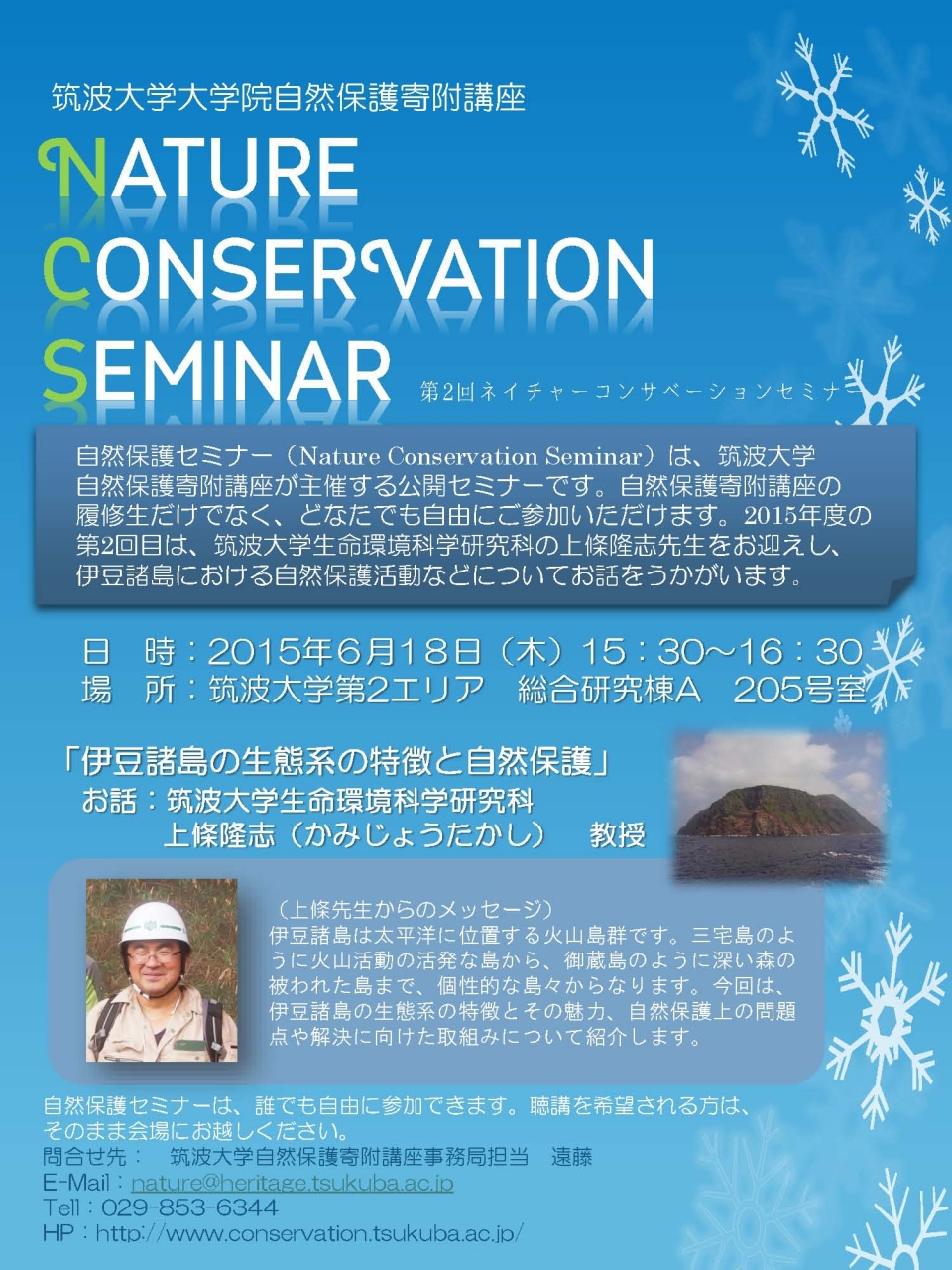第3回NCセミナー(Nature Conservation Seminar)のお知らせ
自然保護寄附講座が主催する、学生向けセミナー、「NCセミナー」を開催します。
気取らず、ざっくばらんに、自然保護について考えるとても良い機会です。
今回は、生命環境科学研究科の佐方啓介先生に、「ニュージーランドのけものと人」について
英語でお話いただきます!
下記の通り行いますので、講座外の学生でご興味のある方はご自由に参加下さい。
日 時:2015年6月30日(火)17:00~18:00
場 所:筑波大学春日プラザ3F セミナー室
内 容:筑波大学生命環境科学研究科 佐方啓介(さかたけいすけ)准教授
「New Zealand's furry and non-furrycreatures.」
※NCセミナーは、自然保護寄附講座に所属する学生を対象としておりますが、
講座外の学生の参加も歓迎します。
※学外からのご参加は受け付けておりません。ご了承下さい。

上記チラシはこちらからダウンロードいただけます:
第3回自然保護セミナーポスター.pdf事務局 遠藤
「自然保護寄附講座Newsletter No,1」が発行されました。
記念すべき第1弾は、開講年である2014年度の総まとめです。
是非ご覧下さい。

ダウンロードはこちらから→ Newsletter_No,1.pdf
事務局 遠藤
第2回NCセミナー(Nature Conservation Seminar)のお知らせ
自然保護寄附講座が主催する、学生向けセミナー、「NCセミナー」を開催します。
気取らず、ざっくばらんに、自然保護について考えるとても良い機会です。
今回は、生命環境科学研究科の上條隆志先生に、伊豆諸島の生態系の特徴と自然保護」
についてお話いただきます!
下記の通り行いますので、講座外の学生でご興味のある方はご自由に参加下さい。
日 時:2015年6月18日(木)15:30~16:30
場 所:筑波大学第2エリア 総合研究棟A 205号室
内 容:筑波大学生命環境科学研究科 上條隆志(かみじょうたかし)教授
「伊豆諸島の生態系の特徴と自然保護」
※NCセミナーは、自然保護寄附講座に所属する学生を対象としておりますが、
講座外の学生の参加も歓迎します。
※学外からのご参加は受け付けておりません。ご了承下さい。

上記チラシはこちらからダウンロードいただけます:
第2回自然保護セミナーポスター.pdf事務局 遠藤
平成27年度、自然保護寄附講座履修申請書の受付を終了致しました。
たくさんのご応募ありがとうございました。
選考の詳細につきましては、後日ご連絡致します。
事務局 遠藤
